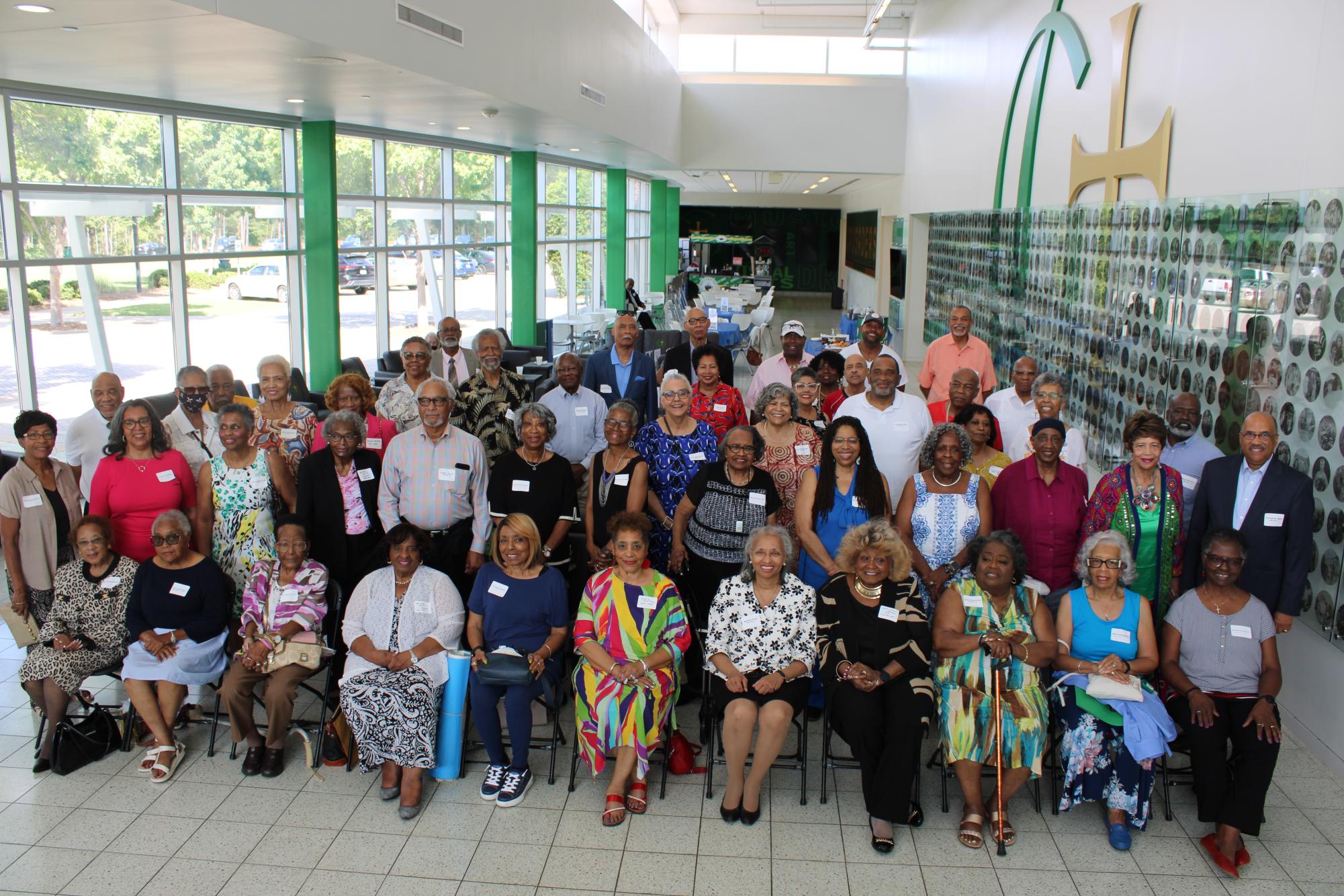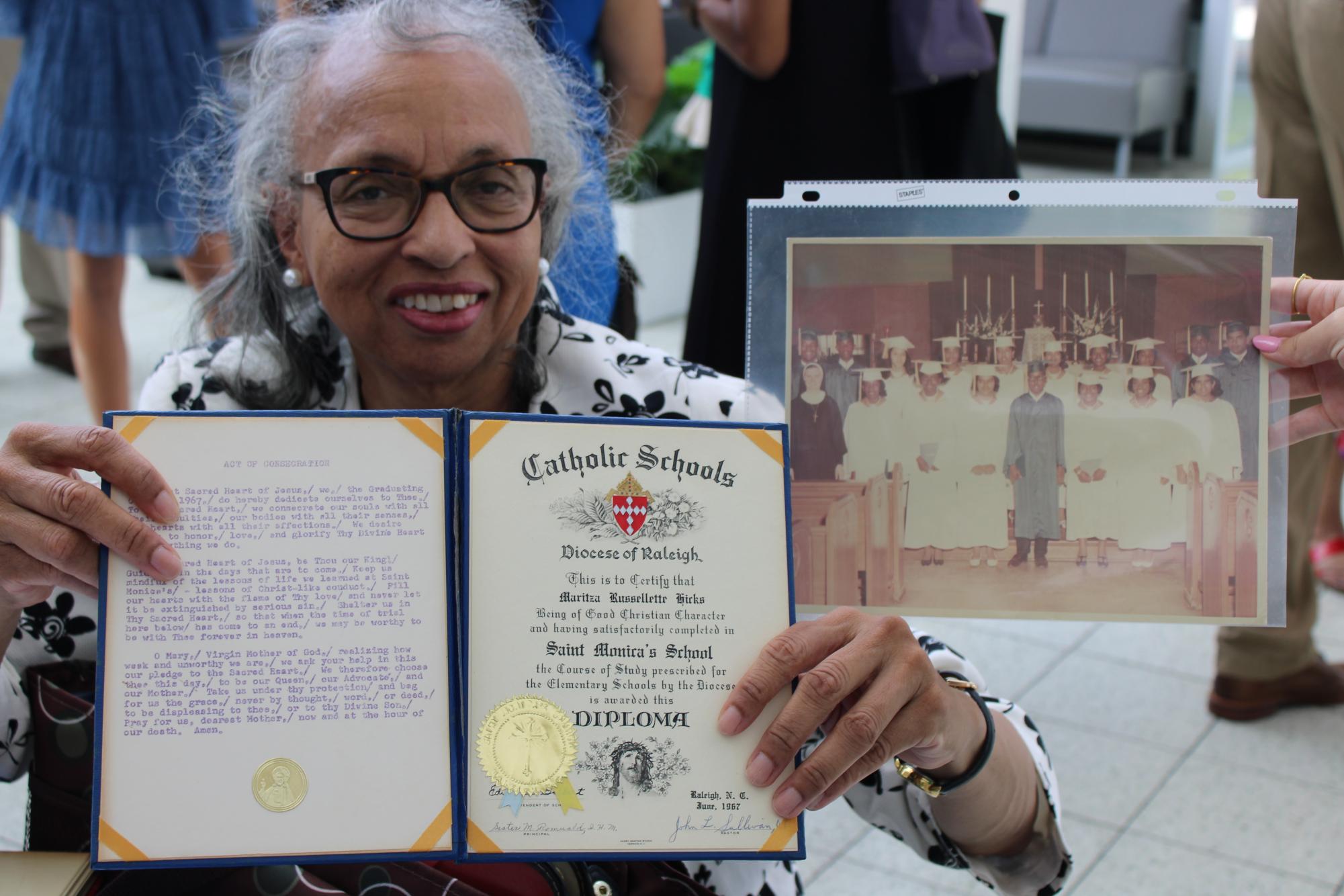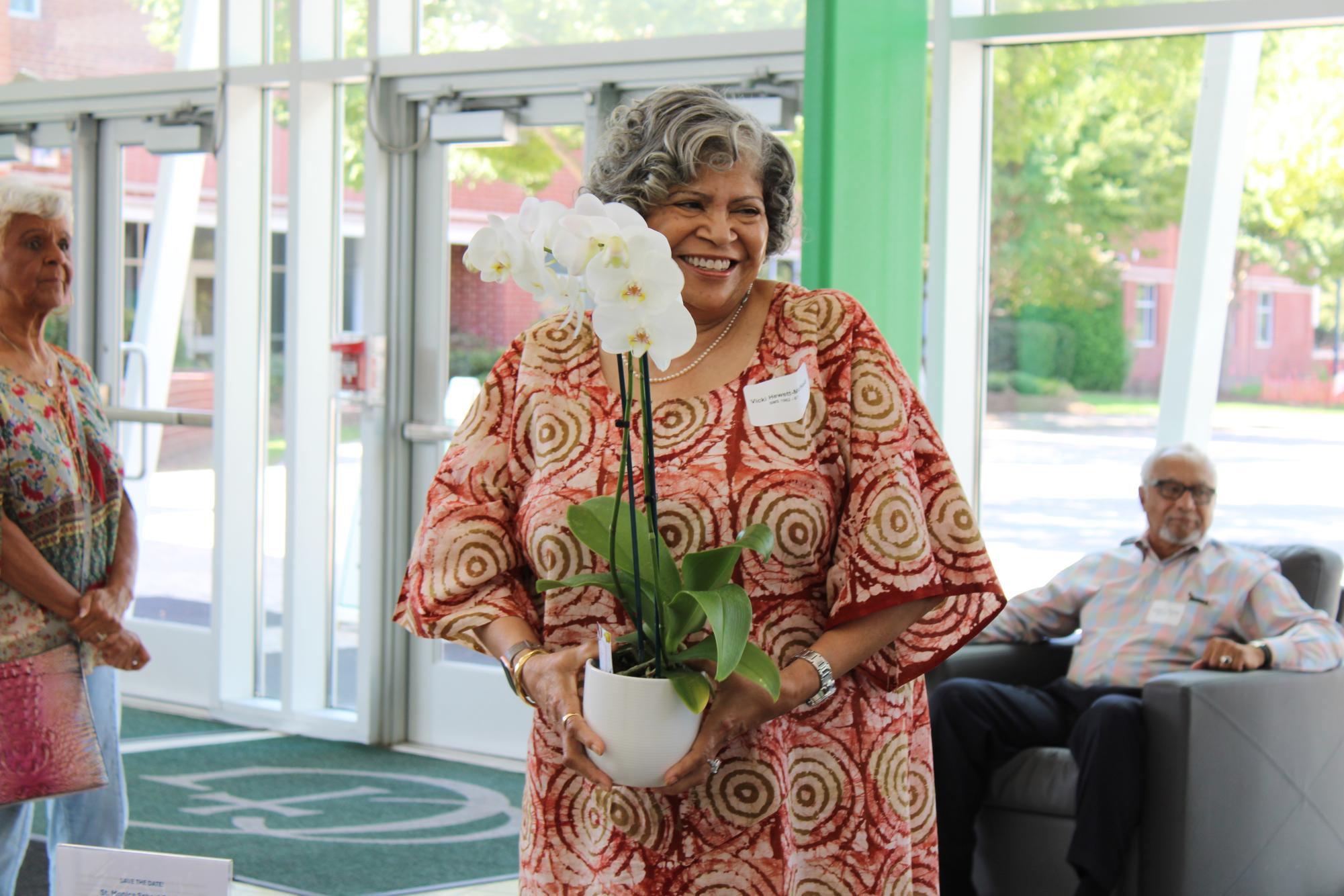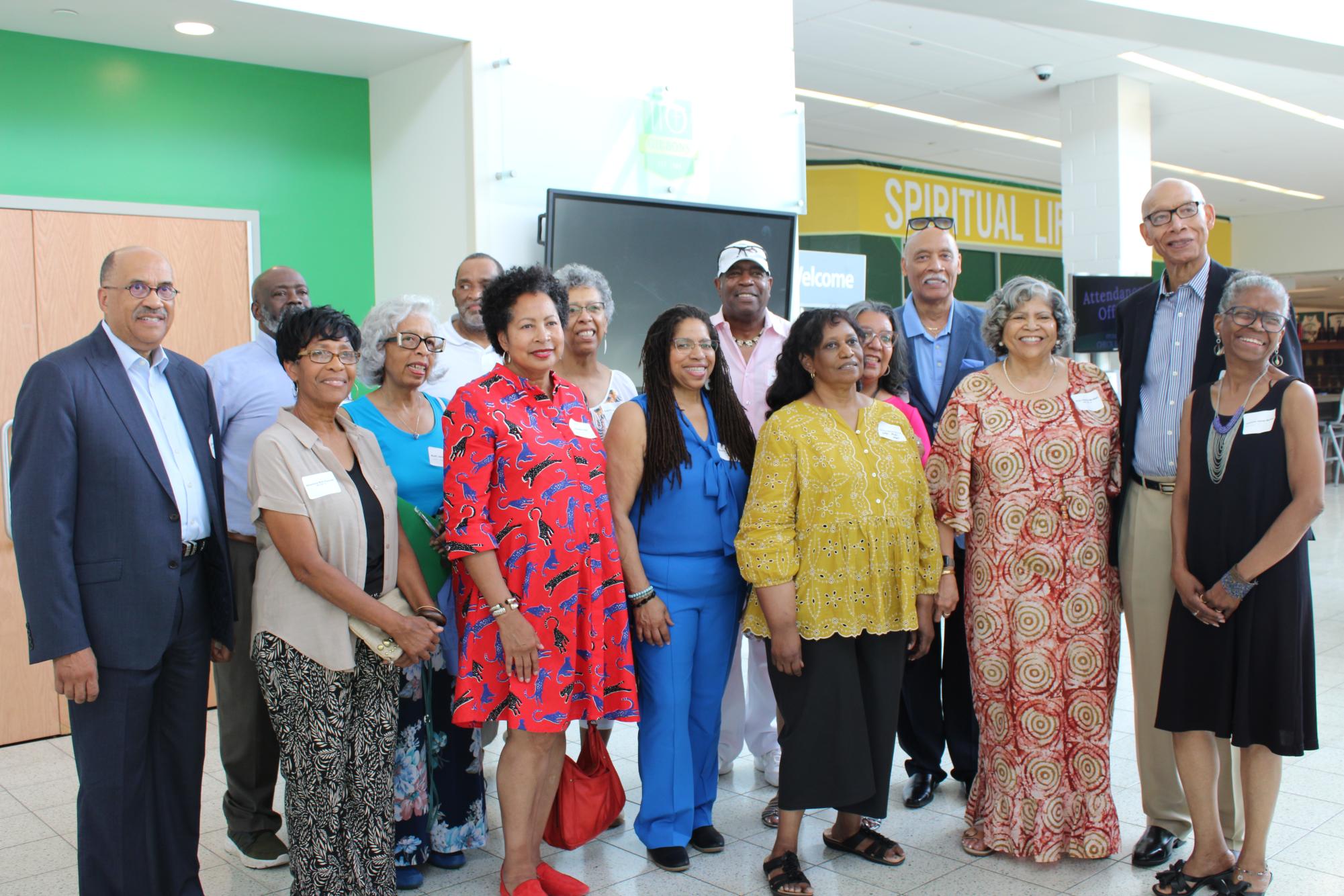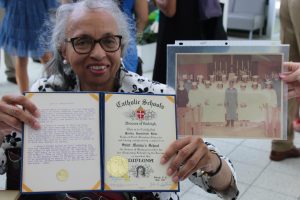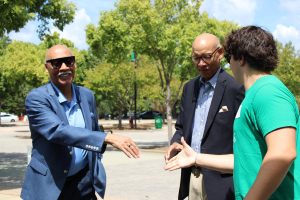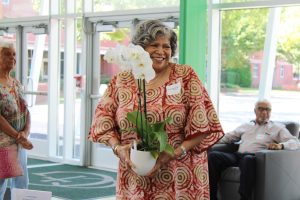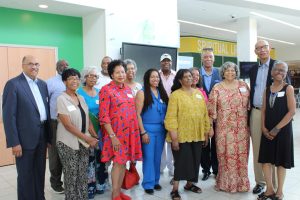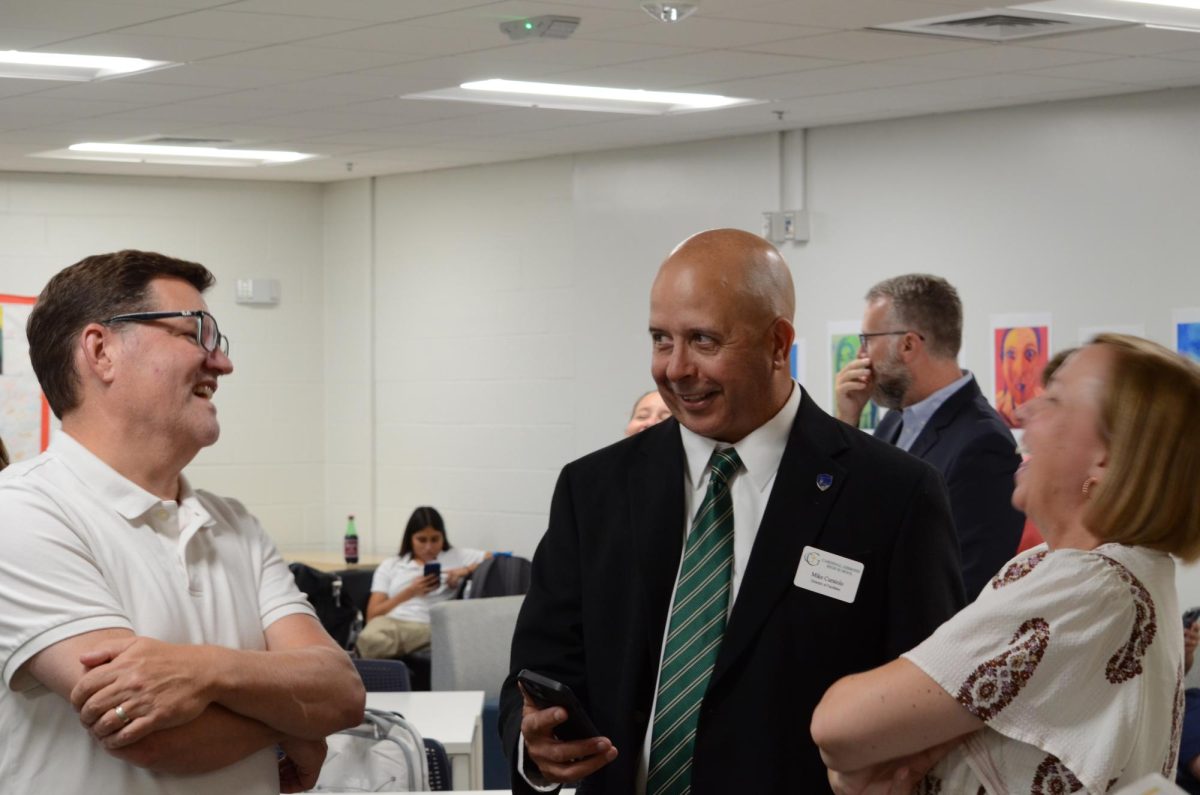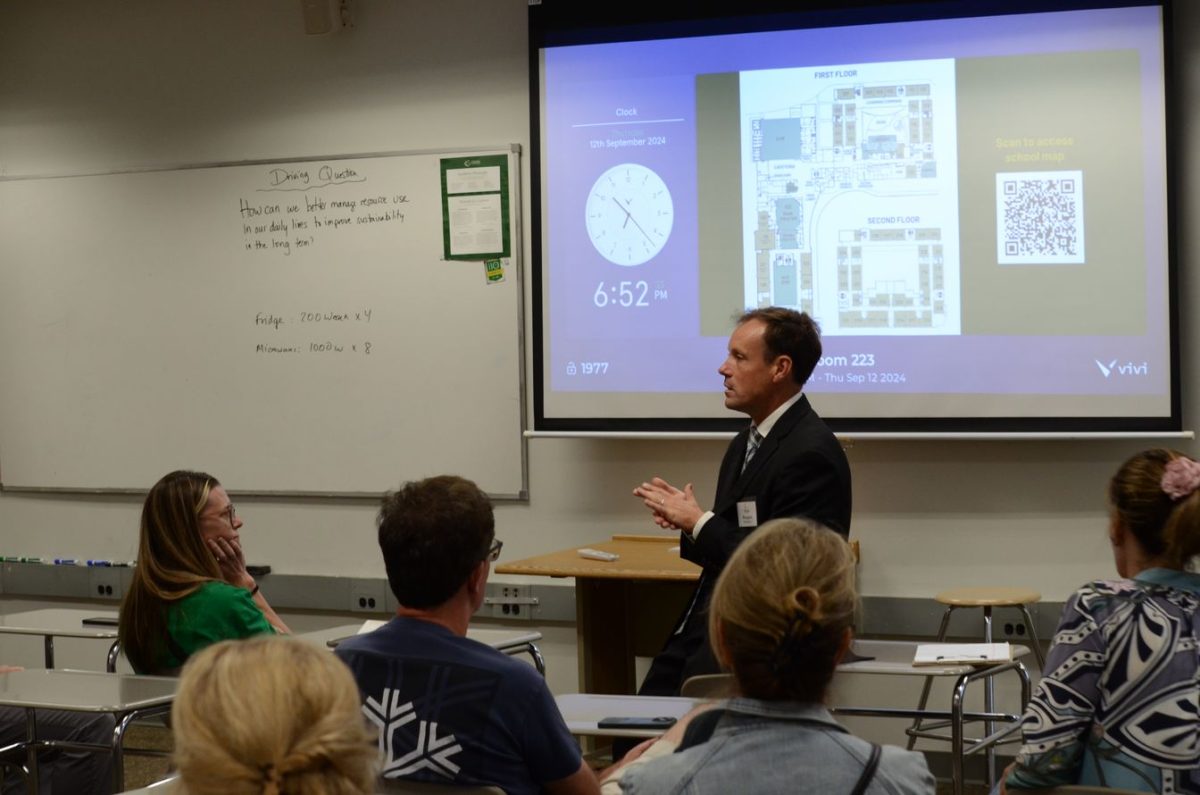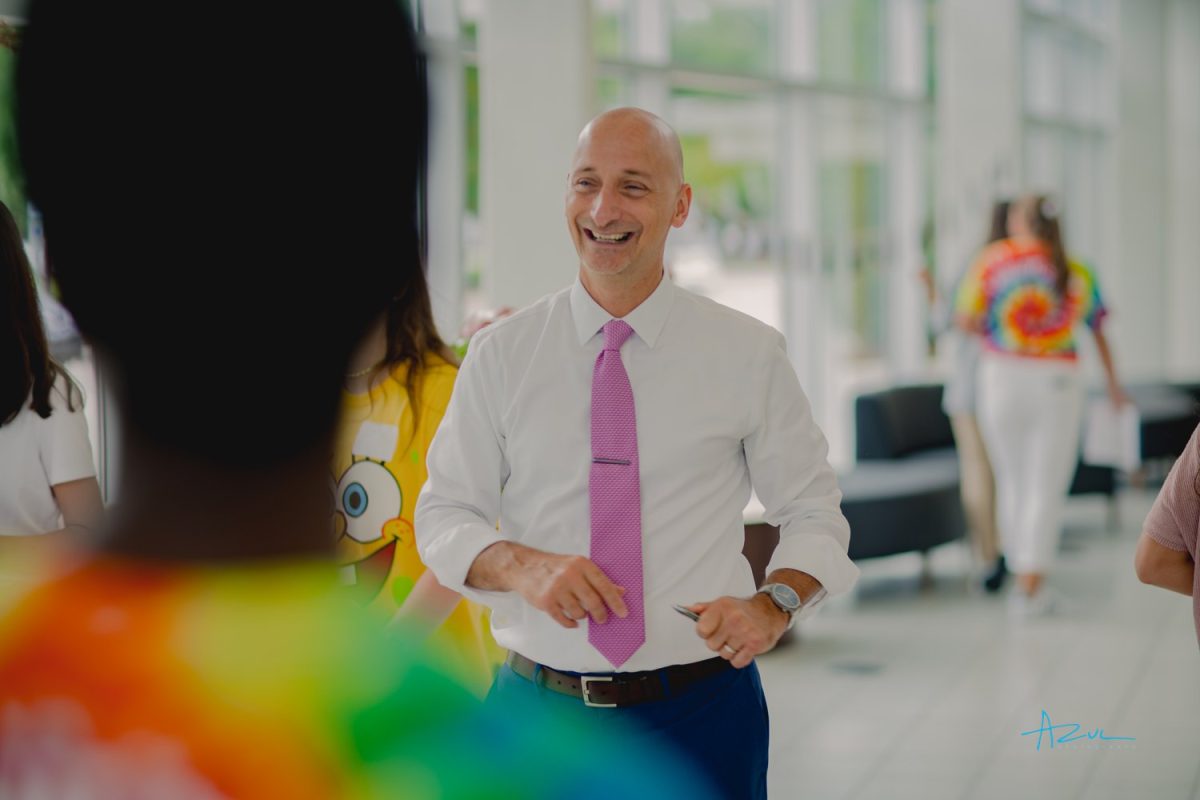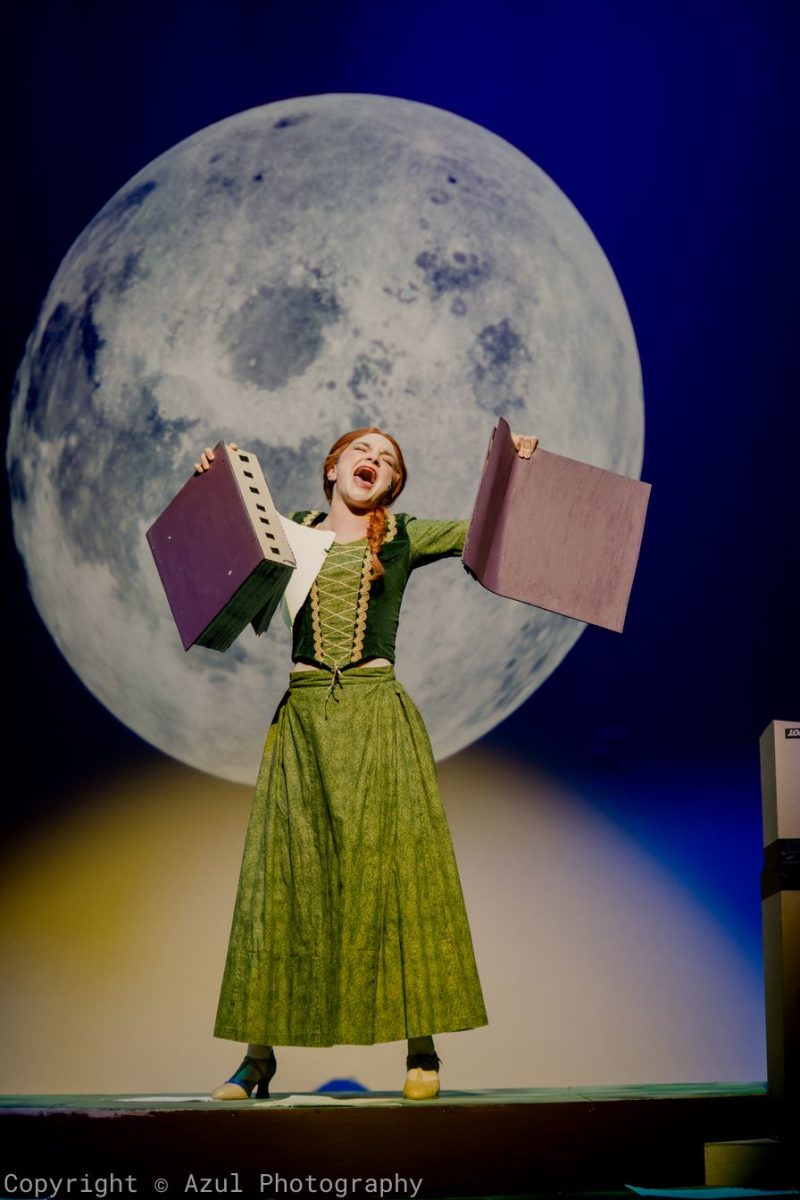As the Cardinal Gibbons lobby filled with chattering voices and the sweetness of reunion, unfamiliar faces came into view. Instead, the lobby was alive with alumni who had once attended St. Monica’s, an all-Black Catholic school that operated from 1930-67 in downtown Raleigh. These alumni gathered at Cardinal Gibbons to start a permanent digital archive, to both celebrate and document the history of St. Monica’s.
On Sunday, Aug. 24, many were gathered, flipping through yearbooks, musical programs, and photographs, all laced with memories of their past. Gibbons volunteers helped scan all items brought in and returned them to the alumni before they left. As they embraced each other with care and waited in line to scan memorabilia, the joy at being together again was palpable.
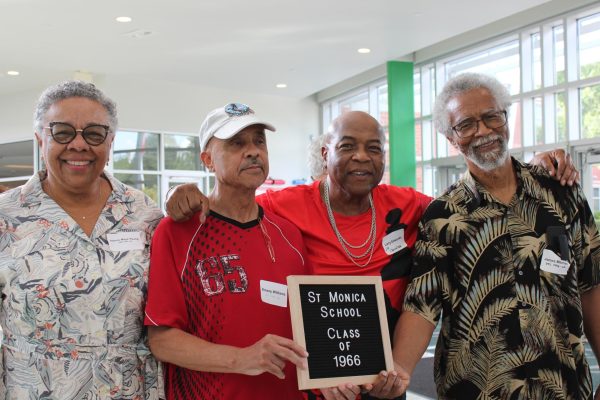
Backstory
Built by the Catholic Diocese of Raleigh, St. Monica’s was a Catholic school for Black students when schools were still segregated. In 1954, following Brown v. the Board of Education, Bishop Waters decreed that all Catholic organizations in North Carolina would no longer be segregated. This allowed St. Monica’s students to continue their high school education at Cardinal Gibbons, which was known as Cathedral Latin at the time.
The first Black students began class at Cathedral Latin on Aug. 31, 1954, making it the first desegregated school in North Carolina. However, the grade schools were not yet integrated in 1954, and St. Monica’s remained open. In 1967, St. Monica’s officially closed following Wake County’s decision to integrate all schools, and students were invited to join Cardinal Gibbons.

Friction within Gibbons
While Cathedral Latin (Cardinal Gibbons) celebrated the integration, many St. Monica’s students did not have an easy time. In 1954, when Bishop Waters invited St. Monica’s students to join Cathedral Latin, many white families left. The Bishop went door-to-door, encouraging white families to stay.
“That’s not living what you are speaking,” Hazel Sanders said, a St. Monica’s and CGHS alumna, on the Catholic families who left following the integration.
Those who stayed treated St Monica’s students with respect and acceptance. White and black students had sleepovers, cookouts, and played on sports teams together.
However, many St. Monica’s students felt discriminated against by the nuns.
“The reason that my family stopped going to Cardinal Gibbons,” Vicki Hewitt-McNeil said, “is because a nun called my brother the n-word. And my daddy couldn’t take it anymore.”
Sanders had a similar experience. A nun at Cardinal Gibbons, who taught science, explained to the class that intermarriage would result in “one black child and one white child,” and therefore should be avoided.
“How ignorant is that?” Sanders said.

Legacy of St. Monica’s
St. Monica’s School provided children with a solid and equal education for over 35 years.
Former students felt that their education prepared them to live in a segregated society and then transition into a desegregated one. The nuns at St. Monica’s taught students to challenge authority and injustice, according to alumni.
Though it’s been 58 years since St. Monica’s closed, it was still important for alumni to document their school experience in a lasting way that will continue beyond their time. The idea for the digital archive was prompted by the knowledge that the Catholic Center did not previously have any records on St. Monica’s.
Alumni felt that the lack of records reflected indifference to the history of St. Monica’s.
“My little black school,” Hewitt-McNeil said. “They don’t see me.”
Throughout it all, St. Monica’s students continue to embody strength and courage. When faced with challenges of racism, discrimination, and hateful speech, alumni know to speak up.
“That spirit becomes ingrained in you,” Hewitt-McNeil said. “I will not sit in the back of a church – because I don’t have to.”


